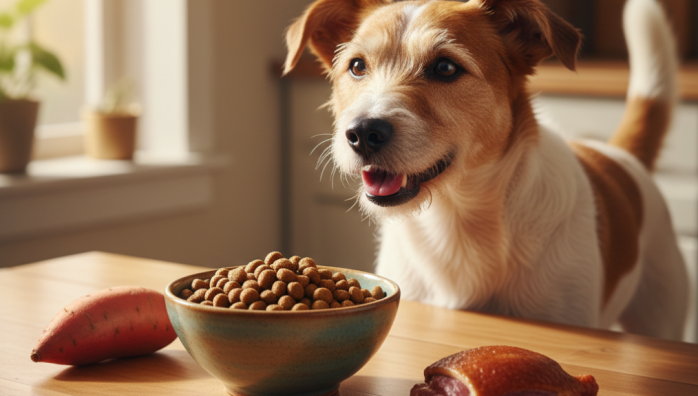Limited Ingredient Diets for Pet Allergies
by admin in Pet Care Basics 16 - Last Update November 25, 2025

I remember the endless cycle of worry. My beloved rescue, a sweet terrier mix named Finn, was constantly scratching. His ears were always red, his paws were raw from licking, and his stomach was so sensitive that finding a food that agreed with him felt impossible. We\'d been to the vet countless times, tried medicated shampoos, and swapped foods more often than I care to admit. I felt like I was failing him, and honestly, I was at my wit\'s end.
What finally changed things for us
During one particularly frustrating vet visit, after another flare-up, she suggested we strip everything back to basics. She explained that many pet allergies are actually food sensitivities, often to common proteins like chicken or beef, or even grains. The solution, she proposed, was an elimination diet using something called a Limited Ingredient Diet, or LID. The concept was so simple it was brilliant: a food with just one protein source and one carbohydrate source. Fewer ingredients mean fewer things that could possibly be causing the problem.
How a limited ingredient diet works
Think of it as a dietary reset. By feeding your pet a \'novel\' protein—one they\'ve likely never had before, like duck, venison, or salmon—and a simple carbohydrate like sweet potato or peas, you give their inflamed system a break. For several weeks, this is all they eat. No treats with other ingredients, no table scraps. It\'s tough, but it\'s the only way to get a clear picture.
For Finn, we chose a duck and potato formula. The transition was slow and steady, mixing a little of the new food with the old over ten days to avoid any more tummy upset. In my experience, rushing this step is a recipe for disaster, so I took it very slowly.
The key to success: patience and observation
After about a month on the strict LID, I started to notice small changes. The frantic scratching began to subside. His ears looked less angry. It wasn\'t an overnight miracle, but it was progress. After about eight weeks, the difference was incredible. He was a happier, more comfortable dog, and I finally felt like I could breathe again.
- Common pet food allergens to watch for:
- Beef
- Chicken
- Dairy
- Wheat
- Soy
- Corn
Once your pet is stable and symptom-free, you can, with your vet\'s guidance, start to reintroduce single ingredients one at a time to pinpoint the exact trigger. We discovered Finn\'s main culprit was chicken. It’s in so many foods and treats, we never realized it was the problem. Finding an LID that worked for us wasn\'t just about managing his allergies; it was about giving him back his quality of life. This is just what worked for Finn, but I always recommend chatting with your vet first to create a plan that\'s right for your pet.














